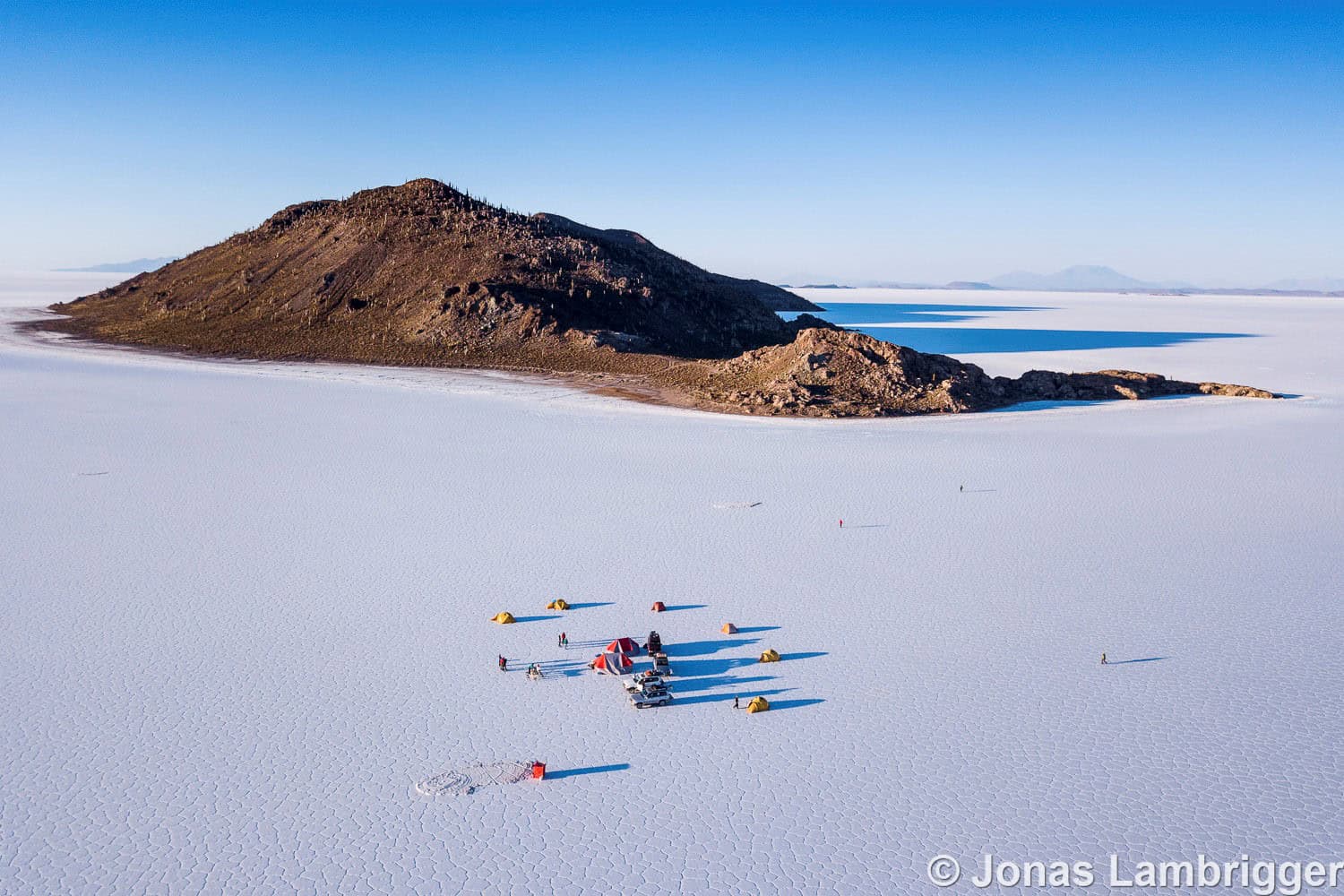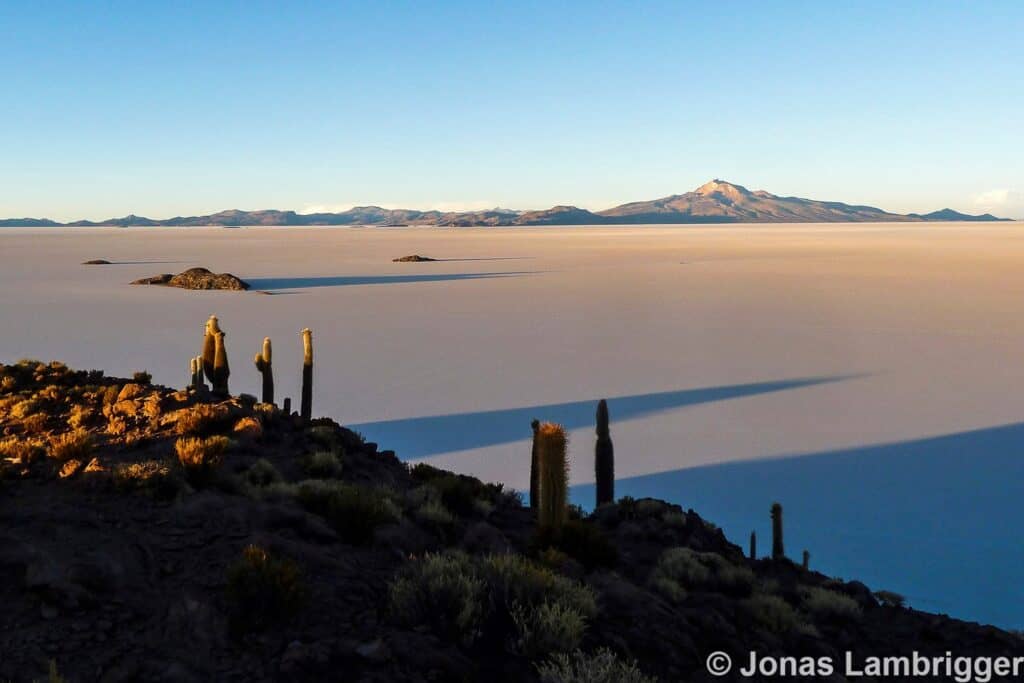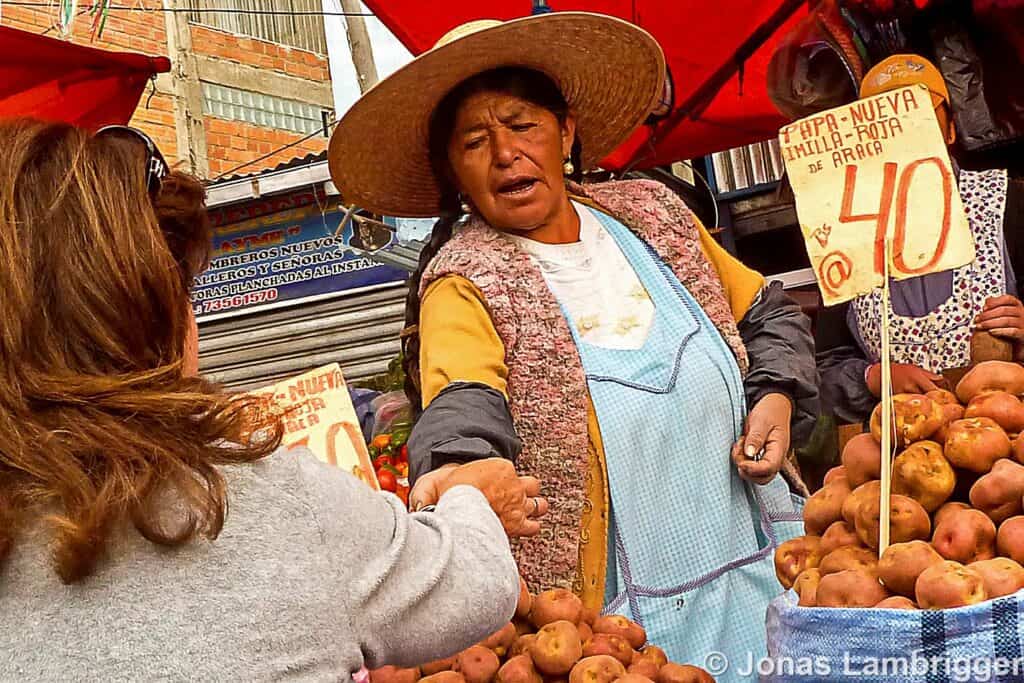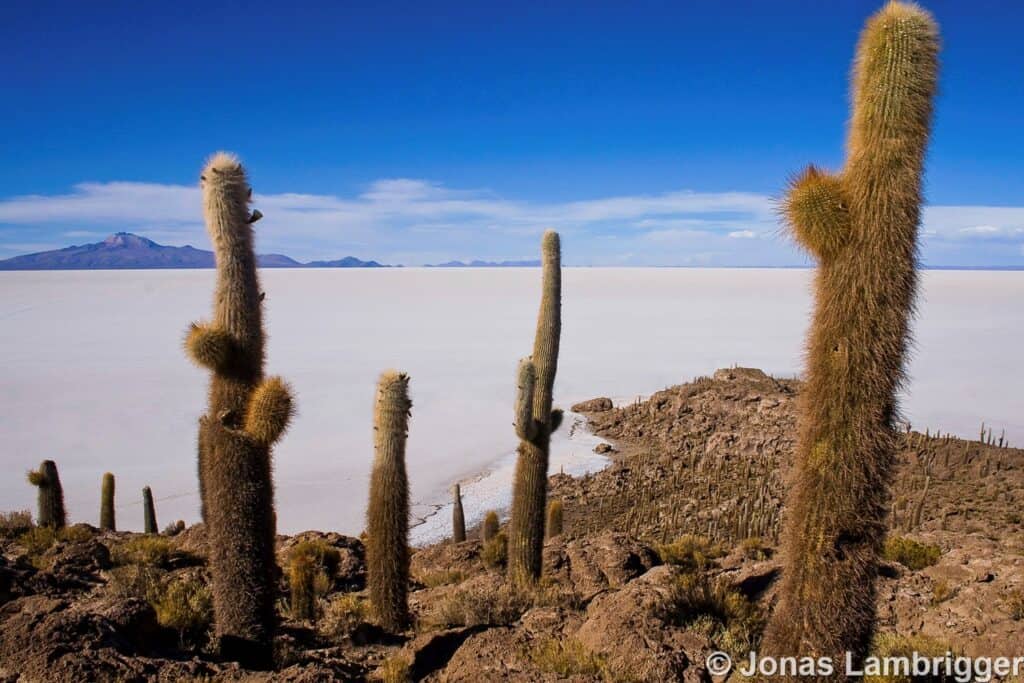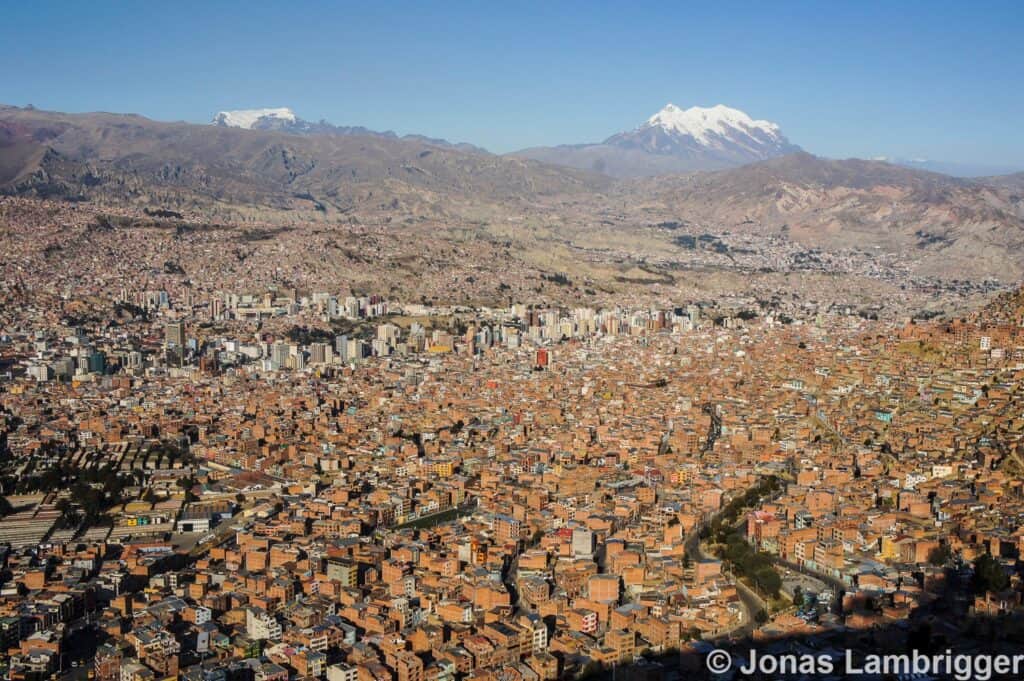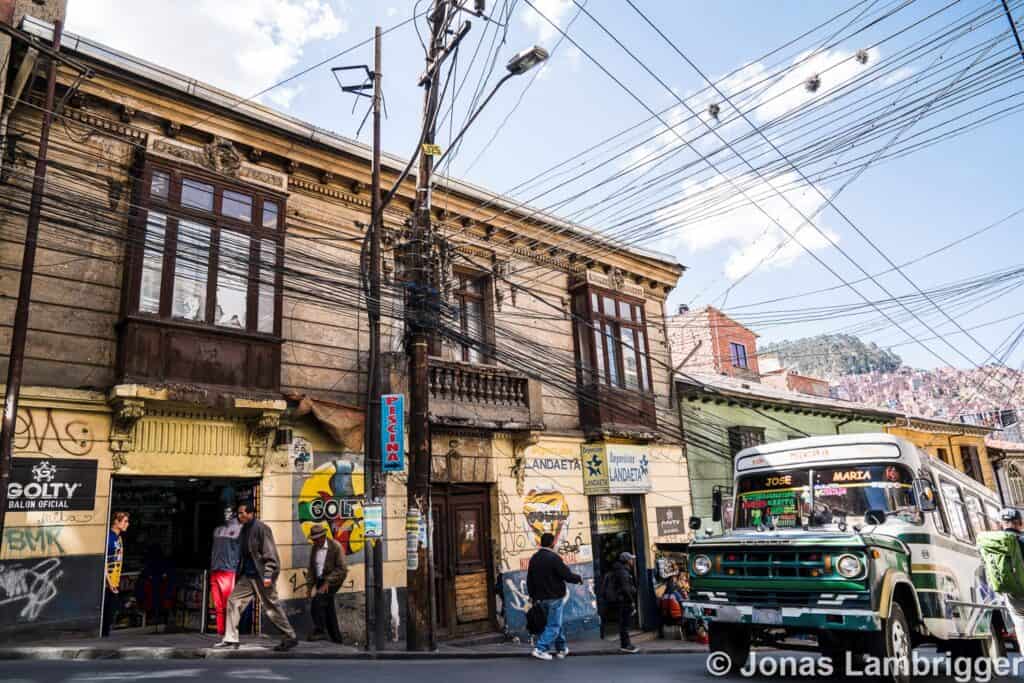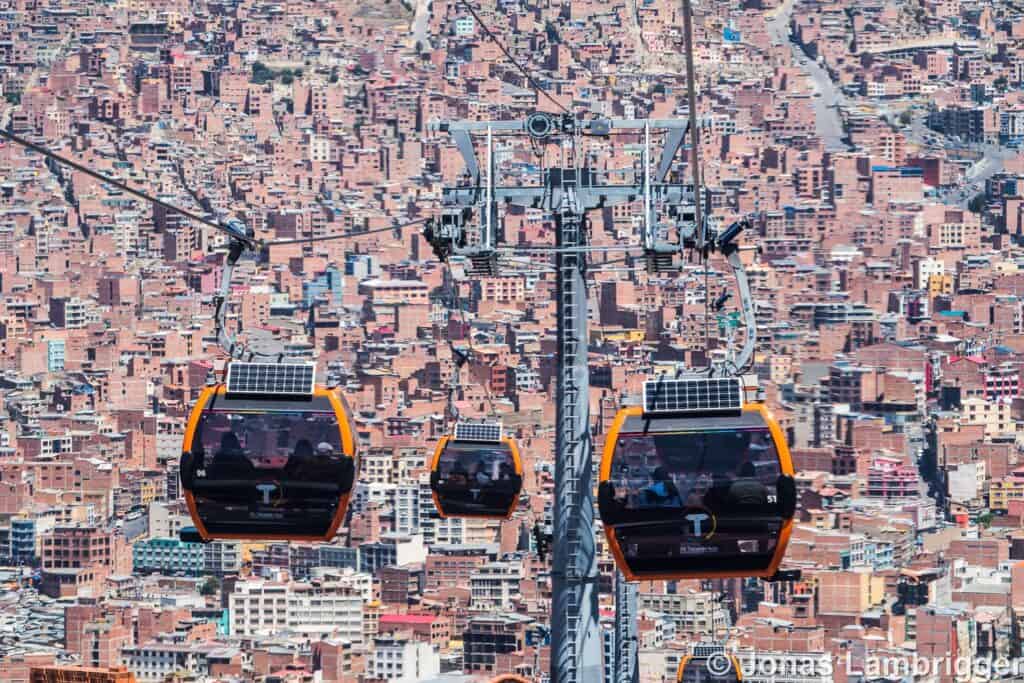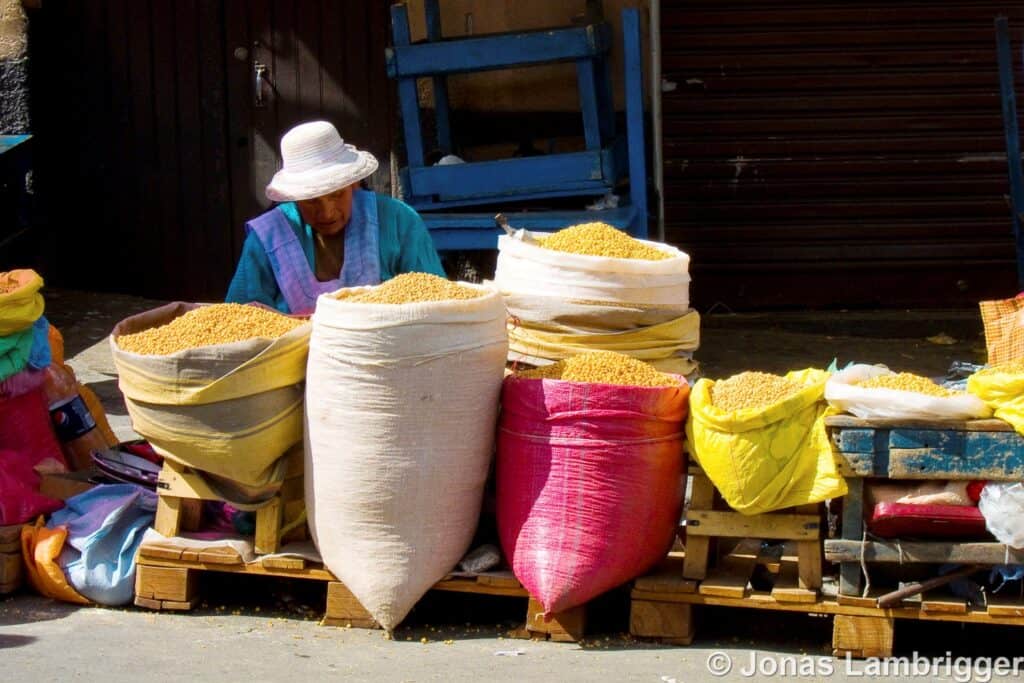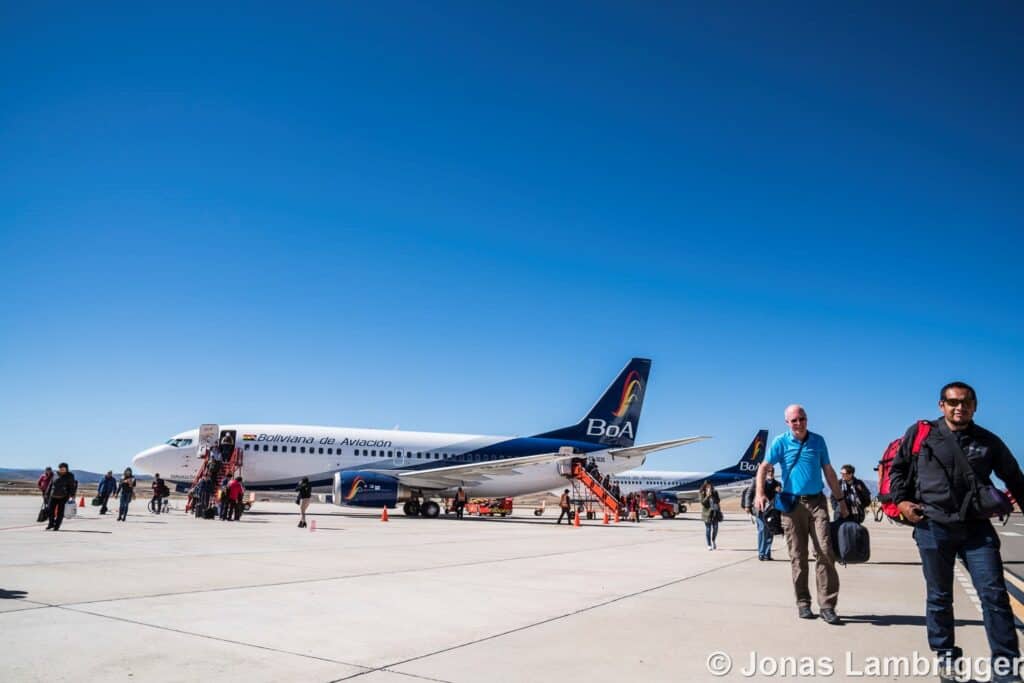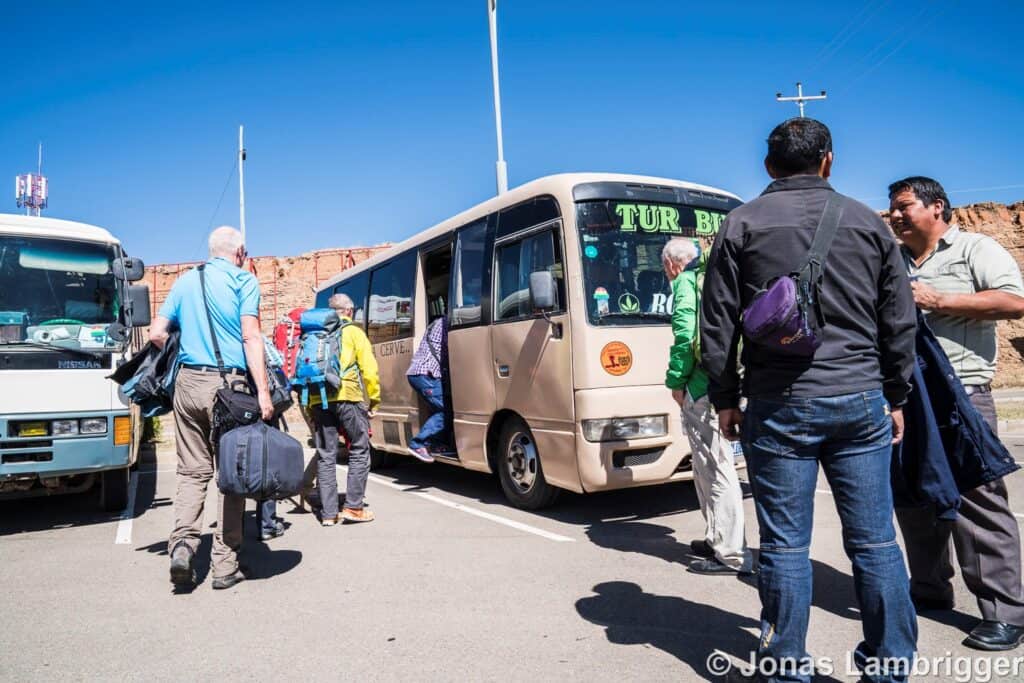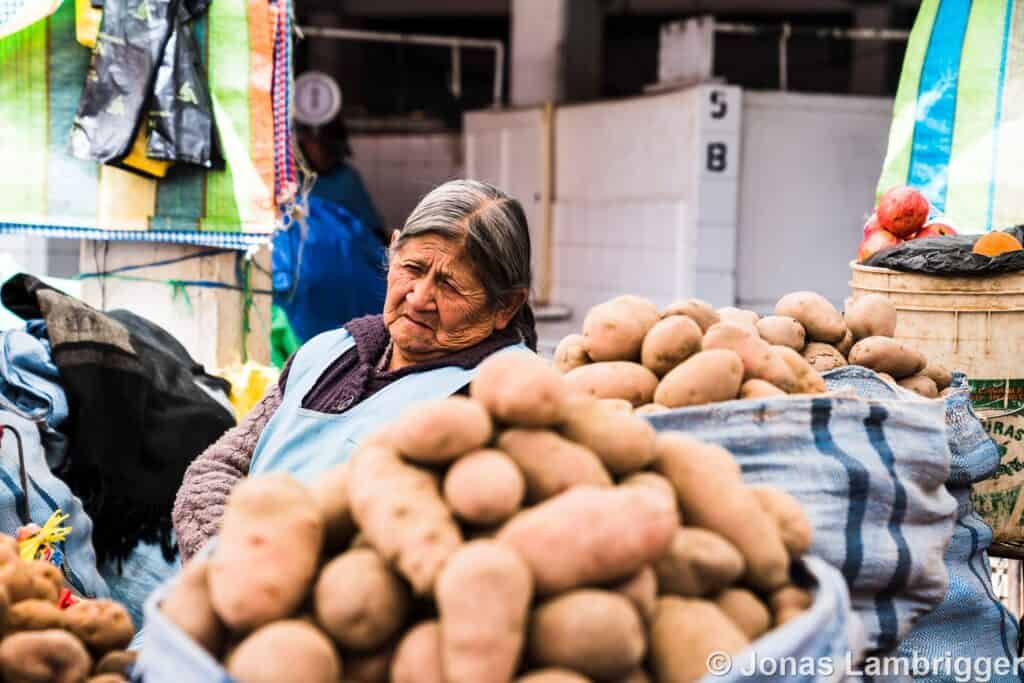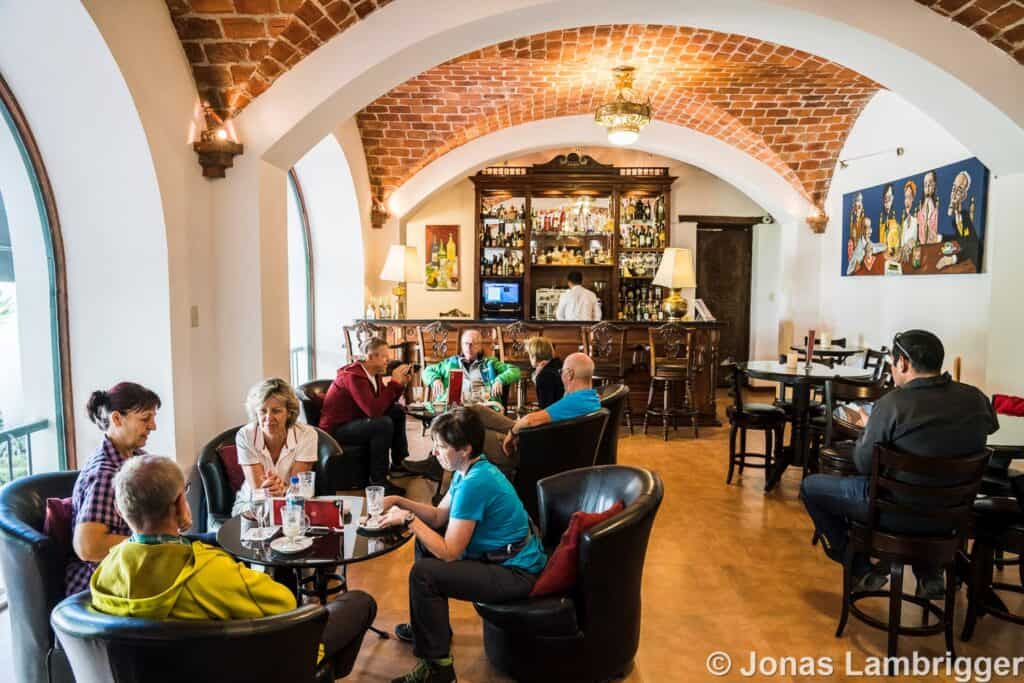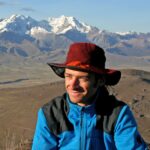Bolivia - Pearl of the Andes!
Enjoyable active nature adventure trip with 2 easy 6000 metre peaks
Bolivia is characterised by a fascinating diversity of landscapes and cultures. "Bolivia, un país donde lo auténtico aún existe" - Bolivia, a country where authenticity still exists. On the one hand, this refers to the wild landscapes and the harsh, diverse climate and, on the other, the indigenous roots of the people of the landlocked country, which are still very much present here. Despite mixing with Spanish customs, the clothing, language, architecture and way of life of the indigenous population still adhere to the traditions of their pre-colonial ancestors. Even long-distance travellers will be amazed by the landscapes!
Thanks to a sensible travel programme in which we slowly increase the overnight altitude and several hikes, we gradually and steadily get used to the altitude. After good acclimatisation, we have the opportunity to hike up a technically easy 6000-metre peak twice as a day tour! You don't have to be an alpinist. Standing at 6000 metres once in your life - what an emotion! Maybe you can even do it twice.
Travel description
In a small, guided group, we explore Bolivia - one of the most authentic and unspoilt countries in South America. We will visit the following places and regions of Bolivia: A large part of the Bolivian Altiplano, the barren south-west of Bolivia with the world's largest salt lake - Salar de Uyuni, the very impressive Colorada and Verde lagoons, the region of Lake Titicaca, the Sajama region with numerous snow-capped 6000 metre peaks, the colonial cities of Sucre and Potosí (silver mine on Cerro Rico), which are also Unesco World Heritage Sites, and finally the mountain cloud forests (Yungas) by (4×4) vehicle and our own muscle power in an enjoyable way. We immerse ourselves in foreign cultures, customs and traditions. At selected locations, we undertake varied hikes/treks of around two to four hours in spectacular landscapes. As we slowly and steadily acclimatise to the altitude, those interested have the opportunity to take part in two one-day treks up a technically easy 6000-metre mountain (optional).
During the mountain hike to the first 6000 metre peak, we have a fantastic view of the vastness of north-west Argentina and Chile. On the second 6000 metre peak, we are surrounded by numerous snow-covered 6000 metre peaks and have a view as far as Chile. The mountain hikes offer the opportunity to gently approach the altitude. Due to the presence of local guides and a good guest-guide ratio, there is no obligation to climb the entire summit. Participants who are not interested in the mountain hikes can spend the day at their accommodation or take part in an alternative hike.
From time to time we stay in beautiful and elegant accommodation in the upper comfort class. We even spend a few nights in beautiful salt hotels! A few times, however, we enjoy the simplicity of staying with locals (2x) and in a tent (1x). The overnight stay in a tent takes place on the Salar de Uyuni! We experience the atmospheric sunset and sunrise on the salt lake - pure emotion!
The trip offers us the opportunity to discover the lively city of La Paz, breathe in the fresh mountain air, be inspired by the barren (salt lake) landscapes of the Bolivian Altiplano and the lush vegetation of the jungle, and discover new horizons in the process. Everyday thoughts and/or work stress fade into the background. This active nature and culture adventure trip with vehicle support is the ideal way to combine nature, culture, a bit of exercise and getting to know new, different landscapes in an enjoyable way! Although this trip is not really a photography trip, it offers passionate photographers some exciting highlights!Even long-distance travellers will be amazed by the landscapes in one of the most pristine countries in South America!
Itinerary
We start our journey in the manageable, colonial and pretty town of Sucre at 2800 metres above sea level (Unesco World Heritage Site since 1991). We spend the first two nights here to avoid any problems with the altitude, in contrast to a start in the much higher La Paz (3600 to 4200 metres above sea level). From here, with a stop at the legendary silver mines of Potosí, we travel to Uyuni, where the largest salt lake in the world is located. We then spend several days travelling through the very varied landscape of south-western Bolivia. Here we have the opportunity to climb the first of two technically easy 6000 metre peaks, the Uturuncu volcano (6008m), as a day tour. We then travel via Salar de Uyuni to the Sajama National Park. Surrounded by numerous, mostly snow-covered 6000 metre peaks, we have the opportunity to climb our second technically easy 6000 metre peak (Cerro Acotango - 6052m). After the ascent and a rest in natural thermal springs, we travel to the highest navigable lake in the world, Lake Titicaca, and later on to the Island of the Sun. The view from the highest point of the Sun Island of numerous snow-capped 6000 metre peaks and the Moon Island is breathtaking. From Lake Titicaca we travel back to La Paz. The next day, a bike excursion (optional) into the evergreen, humid jungle awaits us. We descend on a road from 4600 to 1200 metres. Cars take us back to La Paz. From here we travel back to Switzerland.
Advantages of this Bolivia trip
General information
- Fluent Spanish-speaking tour guide with extensive experience in Latin America.
- The tour guide is very familiar with local specialities.
- As an individual tourist, certain places on the itinerary cannot be reached or can only be reached at great (financial) expense and with a relatively high level of risk (very sparsely populated areas and without mobile phone coverage -> satellite phones).
- Cooperation with local guides who know the region very well and have a dense network of contacts.
- Modern, comfortable and well-maintained 4×4 vehicles with a maximum of 3 or 4 people per vehicle -> more flexibility even for spontaneous (photo) stops.
Small group
- Possibility to stay in small, cosy hotels (often too small for large groups).
- Possibility to respond more to individual guests -> better and more personalised "support" from the tour guide
Advantages of an IVBV/UIAGM (internationally recognised mountain guide) mountain guide tour leader
- Walks at a pleasant pace with regular breaks.
- Even tracks even where the terrain is pathless. This guarantees that your heart rate does not immediately reach 200 and that you can therefore acclimatise optimally to the altitude!
- If you are tired after the ascent and perhaps have a tendency to stumble, the mountain guide can rope up the relevant people to accompany them down the mountain as safely and healthily as possible.
- Experience at altitude: In the event of problems associated with altitude, an IVBV/UIAGM mountain guide with experience at altitude knows the typical symptoms and is more likely to know what measures to take. This is in comparison to a tour guide who is not a mountain guide. When organising this trip, the sleeping altitudes were increased defensively. This means that problems associated with altitude do not usually occur and your body can acclimatise optimally.
Preparatory meeting
Non-binding info meeting
Non-binding information meetings about the trip will take place in Zurich (Volkshaus) and in Bern (dates to follow soon). You are welcome to come along to these meetings to be inspired by beautiful photos of the trip. It is also a place to ask questions and get to know the tour guide.
Travel preparation meeting
A trip preparation meeting will be held for those who have definitely registered. In addition to getting to know the participants, the focus will be on final material issues and other questions. The exact date will be announced after consultation with the participants.
Requirements
General information
- Normal, good health.
- Everyone carries a light day rucksack themselves.
- A leisurely pace adapted to the altitude and the participants.
- We undertake the hikes/treks during the individual daily stages and from specific locations. We will be travelling in private vehicles throughout the trip.
- Flexibility, a willingness to improvise and tolerance towards locals and other group members are essential.
Condition
- Fitness and health for hikes of approx. 3 hours pure hiking time on the ascent and approx. 1.5 hours on the descent. This information refers only to the hikes, but does not include mountain hikes/climbs on the two technically easy 6000 metre peaks.
- Uturuncu volcano (6008m above sea level) - mountain hike: pure "walking time", approx. 3-4h ascent (600 metres altitude) and 1.5h descent (600 metres altitude) on (mountain) hiking trails.
- Cerro Acotango (6052m above sea level) - Mountain hike: Pure "walking time", approx. 4h ascent (700m) and approx. 2h descent (700m) on (mountain) hiking trails, partly pathless terrain, possibly a short section with crampons.
Technics
- Technically easy active nature tour in Bolivia with (4×4) vehicle support - no technical difficulties.
- The optional mountain hikes to the two 6000 metre peaks are technically easy - the challenge can be the altitude of 5500 metres above sea level and above. However, we are well acclimatised to the altitude.
- No crampon experience necessary
- No mountaineering experience necessary
- Sure-footedness required on volcanic paths on the ascent and descent.
The mountain ascents are voluntary. For normal trekkers, both 6000 metre ascents and mountain hikes are possible. You do not need to be an alpinist. Thanks to additional local (mountain) guides, it is also possible to turn back before the summit. If enough participants come together for an easier alternative programme, an alternative hike can also take place.
Equipment and material
After your definitive registration you will receive a detailed list of materials and equipment. We will go into material and equipment questions in detail at the preparation meeting.
Group size
- The trip takes place with 6 to 10 guests.
Price and services
Included in the price
- Organisation and tour guiding by Swiss mountain guides with a federal certificate (IVBV/UIAGM) and extensive experience of South America and Bolivia (fluent in Spanish)
- Transport and transfers in private (4×4) vehicles during the entire trip in Bolivia
- Transfers: Airport-Hotel-Airport
- Local (mountain) guides and drivers
- Full board during the whole trip
- Our own kitchen team, which cooks for us at all locations where there are no restaurants or where there may be hygiene problems
- Non-alcoholic drinks at shared meals
- National park entrances and authorisations
- Overnight stays in hotels, logdes, bed & breakfasts, and partly in simple Andean accommodation, 1x in a tent on the Salar de Uyuni
- First-aid kit
- Tips in restaurants for shared meals
- In good restaurants you eat "à la carte"
Not included in the price
- Scheduled flight: Switzerland-Sucre / La Paz-Switzerland;
- Tips
- Personal expenses
- Alcoholic beverages
- Possible meals and drinks at the airports
- Cancellation and personal assistance insurance (compulsory)
Prices per person for group sizes
CHF 7990.- per person (without flights) for 9 and 10 participants
CHF 8550.- per person (without flights) for 8 participants
CHF 8950.- per person (without flights) for 6 and 7 participantsFrom Switzerland in small groups of 6 to a maximum of 10 participants (22 days)
Minimum number of participants: 6 persons
Maximum number of participants: 10 people
Single room supplement per person: CHF 1250 (cannot be guaranteed for every accommodation)
Bergschaft is a travel agent; a travel contract with Montanaventura GmbH is entered into with the travel registration. With the registration the AVB of the travel service provider Montanaventura GmbH accepted.
If you have any questions, please feel free to contact us, preferably directly at Florian or via the Contact form.
Impressions:
How to come to Bolivia with us
- 24 May - 14 Jun 2025, Saturday - Saturday, 22 daysOnly 10 places leftMountain guideCHF 7990.-
As Private Tour on your desired date with your group:
As Voucher give your favourite as a gift:
Here we answer some of your questions about travelling to Bolivia in the Andes ?¿
How do I prepare for my trip to Bolivia in the Andes?
Medical
Personal preparation
Good health is a prerequisite for this trip. It is advisable to have a health check-up with your family doctor in good time before departure. Mountain hikes above 2000 metres above sea level are the ideal way to prepare yourself. As we gradually increase the overnight altitude, there are normally no problems associated with altitude.
Supervision by the manager
We carry an appropriate pharmacy compiled by a Swiss doctor according to current knowledge. The tour guide has the necessary knowledge and experience to provide assistance and first aid in the event of minor accidents.
Vaccinations
The yellow fever vaccination may be mandatory depending on the point of entry. Vaccination is compulsory when entering via Santa Cruz de la Sierra (lowlands in the east). Without a valid yellow fever vaccination and the corresponding certificate, you may be subject to compulsory vaccination. Vaccination is not compulsory when entering via La Paz. The following vaccinations are recommended for everyone: Covid19, diphtheria, tetanus, poliomyelitis, measles, hepatitis A, abdominal typhoid
For more information on Bolivia vaccinations, see also:
Healthytravel information about Bolivia
Travel documents
CH passport: Must be valid for at least 6 months when leaving Bolivia. You will receive the tourist visa (stamp and tourist card) directly upon entry.
Insurances
Personal and adequate insurance cover is the responsibility of the customer. It is strongly recommended to take out insurance for risks such as accidents and illness abroad, as well as insurance for search, rescue, repatriation and trip cancellation costs. Cancellation and personal assistance insurance is compulsory.
What is the climate, weather and temperature like in Bolivia in the Andes?
Bolivia generally has a tropical climate with a short rainy season in the South American summer from December to March and a long dry season from April to November.
Due to the altitude, the Altiplano and the Andes Cordillera have a temperate, dry and rather cool climate. The humid lowlands have a tropical savannah climate with dry winters, while the dry lowlands of the Chaco and parts of Santa Cruz have a warm steppe climate with dry winters.
The average temperature in the lowlands is around +25°C, on the Altiplano at around 3700 metres above sea level around +10°C (in comparison to Switzerland: Bern around +8.8°C, Zurich around +9.3°C) and +18°C in the valleys. The warm air masses from the Amazon basin and especially the cold air masses from the south in autumn and winter influence the Altiplano. At the Salar de Uyuni, temperature fluctuations between day and night of up to 30°C are not uncommon. Night-time temperatures here can drop to around -10°C during the travelling season. Rainfall decreases from north to south.
At the Uturuncu volcano and Cerro Acotango, minimum temperatures of around -10°C to -12°C can be expected in the early morning in June (without wind chill effect). Around midday, temperatures usually climb into the plus degrees range. The climate is dry and the temperatures are not as low as in Switzerland, where a more humid climate prevails.
Next highlights
Access to the ski mountaineering tours on 4000m peaks | Allalin and Strahlhorn
9 - 11 May 2025, Friday - Sunday, 3 daysTo the offer16 - 18 May 2025, Friday - Sunday, 3 daysFinsteraarhorn ski tour with mountain guide
To the offer23 - 25 May 2025, Friday - Sunday, 3 daysBasic rock climbing course | Climbing course with application day
Weekend from 26 - 27 April 2025To the offerWeekend from 3 - 4 May 2025- to the offers
All last minute offers
